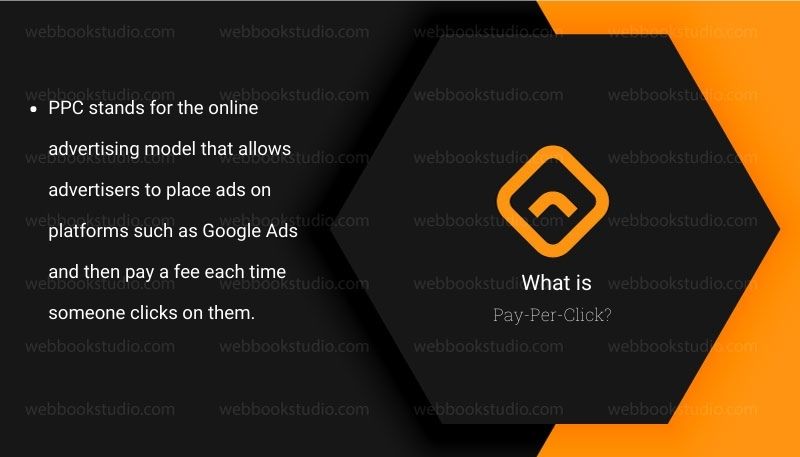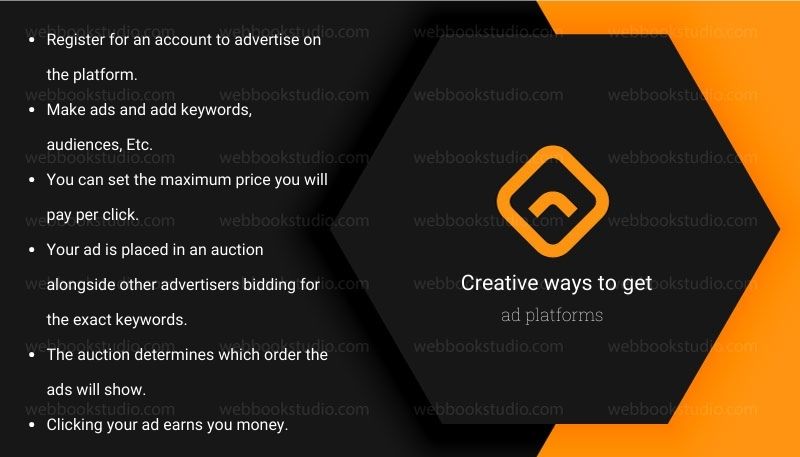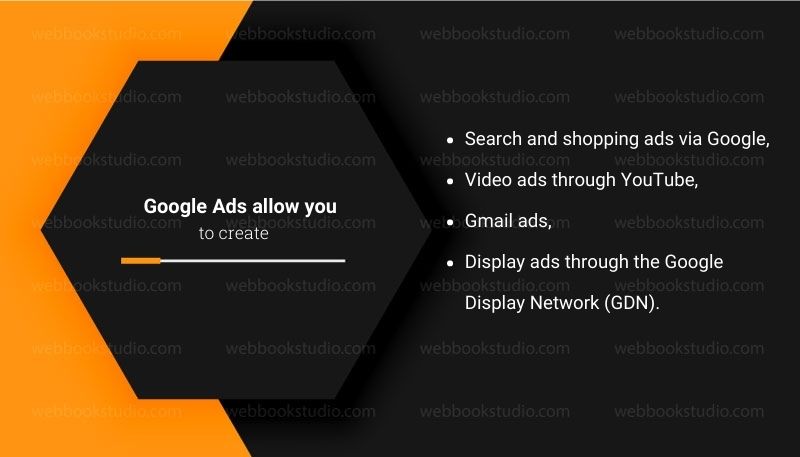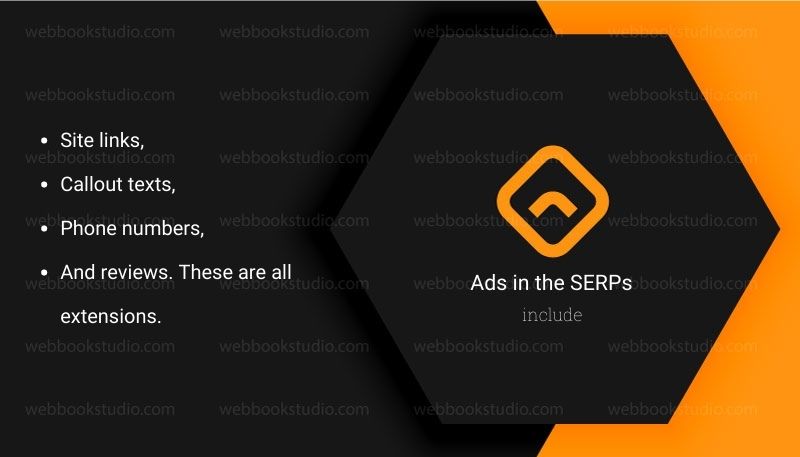Pay-Per-Click Turning over, Just Create Perfect Tricks Gathering Traffic Took in a Web Umbrella
Pay-Per-Click (PPC) In today’s digital world, it is a popular technique used in marketing to get potential customers interested in a product or service.
This method is often used on websites and apps where people can click on a link to learn more about the product or service. The site or app then displays an Ad campaign that the user can complete to receive a commission for their actions.
Pay-per-click is a common way to get traffic to your website or blog.
By using this technique, you can determine how much traffic you are receiving and adjust your strategy accordingly.
What is Pay-Per-Click?
PPC stands for the online advertising model that allows advertisers to place ads on platforms such as Google Ads and then pay a fee each time someone clicks on them.

You will find ads at the top of almost all Search Engines like;
- Bing
- Yahoo
- Duck duck go
The product grid is located to the right. These ads are also used to indicate when a search is commercially intended.
PPC is used by businesses to drive as like;
- Traffic,
- Sales,
- Inquiries from their target audience.
Common PPC platforms offer a great depth of targeting so that ads can serve only those most likely to match your customer demographic.
Search engines are the most habitual way people search for suppliers of products and services.
If there is an active audience searching for your product or service, you have a chance to sell.
PPC allows you to reach these people at a level that is more precise than traditional advertising.
However, PPC allows you to reach your target audience when they are searching for businesses like yours.
You also gain data insights that will help you improve your channel’s efficiency over time.
Why is Pay-Per-Click so Important?
PPC marketing is a way for businesses to maximize their sales campaigns and reach the right audiences. Google Ads is an example of PPC marketing.
Your advertisement will be displayed when someone searches for your product or visits related websites.
According to Google, 45% of small businesses invest in PPC advertising. Text ads are the most popular, with 49% clicking them. 74% of brands believe that PPC is a major driver for their business.
What does Pay-Per-Click advertising look like?
PPC is a marketing channel on a variety of ad platforms. People Choose are Google Ads and Bing Ads.
There are many ad formats available on each platform, including:
- Search Ads
- Shopping ads
- Display ads
- Video ads
- Gmail Ads.
You will most often find businesses using Google Ads for their PPC marketing.
Because it allows them to reach the most significant number of customers and clients, it also allows them to set up campaigns in various ways that suit your goals.
However, PPC still works similarly regardless of the platform or ad format. It is elementary.
Pay-Per-Click offers many Benefits that can help your business.
The benefits of using pay-per-click in digital marketing: What are they?
Here below details discussion of the best method our team playing the Valuable Customers Campaign;
Optimised PPC is cost-effective
When someone searches for a similar term, your ad will appear on the first page of the results. Targeted traffic to your site will bring you more exposure and brand visibility.
Multiple ad campaigns can run for each keyword
That results in higher Click-Through-Rates (CTR), greater conversions, and more sales revenue.
Instant Traffic
The Return On Ad Spending (ROAS), if PPC is performing as it should and High.
When visiting your website what is worth more than what you pay?
It’s not enough to just pay for clicks and gain traffic. Much work goes into creating a solid PPC campaign.
It involves choosing the right keywords and organizing them into campaigns and ad groups.
However, it includes setting up PPC landing pages that can convert.
It is essential to know how to run a PPC campaign. Search engines will reward more relevant and targeted campaigns with lower-cost ad clicks.
Google will lower your cost per click if you create valuable and satisfying ads for users. That ultimately leads to a higher profit.
PPC in Digital Marketing Impact on Social Media
Social media advertising has the second largest market for digital ads, behind search advertising, with a global revenue of $153 billion in 2021. Social media PPC advertising is dominated by Facebook marketing, which controls 21.5%.
How you can Get Affordable and Cost-effective Support from Webbook Studio in a Digital Marketing Campaign?
Webbook Studio is Web Design and Web Development Company not only in the USA, but Worldwide service also provides Digital Marketing with Update technology with the eCommerce platform.
We made it available to ensure our clients receive the highest bid price and the best visibility on the Shopping carousel.
Our World Class Expertise team’s automated solution automates manual bidding for clients with many product SKUs. That allows our clients to spend their time on other aspects of their business.
Best effective ways to turn a pay-per-click campaign into a moneymaker
PPC is a digital marketing channel businesses use to drive traffic to their website and convert those visitors into customers.
You may be looking to get your first sales and traffic for a new company or to increase your brand’s online presence.
PPC is an excellent way for your business to reach new customers and market it well. However, the process can need to be clarified for those just starting with the channel.
Paid advertising is big business.
It was reported by Alphabet (Google) that they earn more than $162 million per year from their ad platforms.
Here below are Creative ways to get it;

- Register for an account to advertise on the platform.
- Make ads and add keywords, audiences, Etc.
- You can set the maximum price you will pay per click.
- Your ad is placed in an auction alongside other advertisers bidding for the exact keywords.
- The auction determines which order the ads will show.
- Clicking your ad earns you money.
It’s simple to understand. At the same time, there are some differences between ad formats and other bidding strategies, but the core principles of advertising remain.
Let’s now look at the auction, which is often the most confusing part for those just starting with PPC.
What is the process of PPC ad auctions?
An ad auction occurs when a user searches. It can use to determine factors.
- Eligibility of an ad account to participate in the auction
- The order in which the eligible ads appear on the results pages will show in the ad space.
- Each advertiser whose ads appear will charge how much it costs per click.
The first factor is the auction. It is the maximum (cost per click) that an advertiser sets in its ad account for a keyword or ad group. The highest they will pay for each click.
However, they may still need to pay the maximum amount.
- Another factor that can influence the Quality score (QS) is the expected CTR (click-through rate),
- Relevancy advertisement query in Searching user experience of landing pages ads direct some traffic.
- We’ll be diving deeper into Quality Score soon.
- The Ad rank determines the position of an advertisement on the results page.
- That can be described in the following simple Tricks and Formula: Ad rank = Quality Score x Maximum CPC.
Google’s formula is slightly more complicated, but it is still easy to understand.
What determines the amount an advertiser will pay for a click?
Many factors, including Ad Rank, influence CPC.
However, Ad Rank is none of many factors. It is possible to understand what an advertiser spends to appear in their position.
Cost per Click = Ad Rank below / Quality Score + $0.01
PPC can be easily measured and tracked.
It is a more efficient alternative to traditional advertising channels because it allows you to track and measure the return on your investment.
You can track conversions on all popular platforms like Google Ads or Bing Ads. That includes order and lead values;
- You can also see the ROI of specific keywords and ad groups and the overall account.
- Allows you to leverage data and insights to improve the performance and efficiency of campaigns over time and increase the channel’s ROI.
- You have complete control over when and how many ads display.
Do you need to suspend advertising during busy periods temporarily?
You only want to run ads when it is necessary to generate new leads.
PPC is the best way to achieve this. You can control when ads run, including the day of the week. Ads can also turn off and on as often as you like.
However, a strong campaign is used to drive business growth.
Compared to other channels, you have complete control over the amount you spend per day or month and how much per click you pay.
5 Tips to Optimize Your PPC Campaigns for Maximum Results
Targeting your customers can be done precisely. PPC, unlike traditional advertising, allows you to target your exact customers based on your data.
You can adjust bids based on devices, time of day, and location.
These insights can be used to cut down on wasted advertising spending by getting to know your customers and their search habits.
There are many ad formats.
- Run an eCommerce store? Shopping ads use to show your products in prime positions on the SERPs.
- Do you want to convert abandoners of baskets into customers?
- Display remarketing can serve to serve an offer and encourage the desired action.
PPC can include a variety of ad formats that can be used to achieve success in specific business and use situations.
1. PPC vs. SEO; How to Use PPC in Digital Marketing Campaign Support?
Businesses often consider PPC and SEO as similar channels to drive traffic from search engines.
While they share the same goal of appearing on search engines and getting clicks, it is not difficult to see how they differ.
- PPC is about paying per click.
- Clicks for SEO (organic Search) are entirely free.
- PPC can quickly drive traffic from search engines, while organically, it may take some time.
They are not competing channels. Both are part of a more extensive digital marketing mix and can and should work together to achieve online success.
Try to avoid comparing these channels. Instead, see them as integral parts of driving digital growth.
The Main PPC Platforms PPC usually uses one or both leading platforms, Google Ads or Bing Ads.
Let’s look at these and other advertising platforms that you might consider.
More details: Article best Understood; SEO in the field of Digital Marketing.
2. Google Ads; Best Platform of Pay-Per-Click in Digital Marketing
Google Ads is now one of the most people’s choose PPC advertising networks. Google Ads, formerly Google AdWords,
That is an ad platform that lets you can create likes;

- Search and shopping ads via Google,
- Video ads through YouTube,
- Gmail ads,
- Display ads through the Google Display Network (GDN).
It is the most widely used PPC platform and offers many opportunities for businesses to achieve success through the channel.
Using the platform, Google Campaign Management will appear across all Google services.
According to estimates, Google’s market share is 87.71% in the US, Bing’s 6.99%, and Yahoo’s 3.44% as of June 2020.
3. Microsoft Advertising (Bing Ads).
Bing Ads (also known as Microsoft Advertising) allows you to run ads on Bing, Yahoo, and AOL.
Those platforms are very similar from a management perspective. The main difference is in the market size and reach.
However, Bing Ads can still drive traffic to your website and convert visitors. The ROI is often cited as better than Google Ads but at a lower volume.
4. Search Ad Campaigns: The Essentials
Most businesses will use search and shopping campaigns as their primary advertising formats.
Let’s look at search ads in general. That will help you understand the various components when you first use this PPC advertisement.
5. Other Ad Networks
Google Ads and Bing Ads don’t have to be the only ad network you can use to drive growth through PPC.
We will be mainly covering Google Ads as well as Bing Ads.
These popular platforms are great for expanding your reach. The options above are worth considering social ads can often be seen in their channel, apart from search engine PPC.
Paying for clicks: What are the different methods?
PPC was traditionally a pay-per-click strategy for ad networks. However, platforms have evolved and now offer other bidding strategies.
There is no need to tidal to a pay-per-click model. You can use different strategies depending on your goals and the ad format.
- Target cost per action (CPA)
- Target return on advertising spends (ROAS).
- Maximize Conversions
- Maximize Conversion Value
- ECPC: Enhanced Cost per Click
- Maximize clicks
Instead of setting a maximum cost per click, these bidding strategies allow Google to set bids automatically for you.
9 Magic Tricks How do you measure how effective your PPC campaigns are?
1. Campaigns and Ad Groups
Search ads’ main structure broke down into ‘campaigns‘ and ‘ad group.’
These concepts are essential for your account. It is simple.
Campaigns You will only have a few campaigns in an account if you have a large account. Campaigns can contain multiple ad groups that, in turn, include ads and keywords. In most cases, Campaigns are based on how much budget you have available or what goals you are trying to achieve.
2. Location targeting
You can use location targeting to limit who sees your ads if you’re a local business that only serves customers within a specific area.
Multiple locations can be targeted with different bid adjustments in an ad group. You can choose a region, city, or radius to target.
Basically, geo-targeting and local PPC tips are sure to be a hit.
3. Ad Schedule
Do your statistics show that website visitors are more likely to convert during certain hours of the day?
Ad scheduling allows you to adjust bids or stop bidding altogether based on the hour of the day.
You can also create a custom schedule for ad clicks to avoid wasting money on clicks that don’t convert. Many marketers turn off ads overnight.
4. Budget for Campaign
You can decide the daily budget for your campaign based on how much you wish to spend.
Google Ads can and will overspend up to twice your daily budget but not more than what you spend each month.
Google states that ads can be shown on selected days of the week and months based on traffic fluctuations up to 2x your average daily budget.
However, this differs from what you spend each month on your campaigns.
5. Ad Extensions
You can add more information to your ads and more screen space with ad extensions.
These extensions allow you to improve a standard search advertisement to get users to click.
They also help to make your result stand out and show that it is the most relevant to their query.
Clicking on an extension ad costs the same as clicking on the main ad.
You might have noticed that ads in the SERPs include;

- Site links,
- Callout texts,
- Phone numbers,
- And reviews. These are all extensions.
6. Shopping Ad Campaigns: The Essentials Pay-Per-Click in Digital Marketing with Webbook Studio
Shopping ads are the best PPC format for eCommerce stores. These allow you to display your products directly on the SERPs, with images and prices displayed.
Although the basic principles of shopping ads are similar to search ads, there are some subtle differences. You cannot use your keywords to create this campaign.
However, you can control visibility by using negative keywords.
Shopping ads can be triggered by terms related to your product name, description, and landing page copy.
7. Google Merchant Center
Run Google Shopping Ads and take advantage of Free Product Listings; you will need to create a Merchant Center Account to get your products in Google.
To run a shopping campaign, you will need to manually add products or use a product feed on your website.
8. Product Feeds
Although there are other ways to load products in the Merchant Center, most people will want to use a product feed that contains data about each item as likes;
- The product name,
- Description,
- Image,
- Price,
- Unique identifiers,
- Product categories include.
You can easily export a product feed depending on which eCommerce platform you are using. Or you may need to work closely with your developer.
However, be sure to follow the required specification.
9. Dive Deeper into Shopping Ads
Shopping campaigns can be a great way to drive high returns on your PPC campaigns for your eCommerce store. However, you need to learn about the platform, optimize feeds, and manage them to maximize these returns.
This deck is part of our webinar Drive Profitable growth at Scale with Google Shopping Campaigns. It dives deeper into running successful campaigns, which we recommend you check out.
End of the Lines of PPC for Digital Marketing Campaigns Update Strategies
Our Digital Marketing team knows how to launch and optimize campaigns, set goals and measure performance.
You will soon see increased traffic and conversions. Feel free Contact Us with any Queries and Suggestions.
FAQ: Frequency Asking Questions about PPC in Digital Marketing Business.
1. What is PPC marketing?
Pay-per-click (or PPC) is a marketing model where advertisers pay a set amount to providers for each click of their ad. Google, Yahoo!, Google, and Bing are the most used providers. PPC rates can vary among these providers.
2. How many clicks does PPC advertise and get the prevalence of PPC?
They generate 85.3% of all clicks on Adwords or Google Shopping campaigns. Pay-per-click advertising is a popular choice for small businesses. 45% of them invest in it. Text ads are the most clicked, with 49% clicking them. 74% of brands believe that PPC is a major driver for their business. 64% of brands plan to increase their PPC budget over the next 12 months.
3. What is the size of the PPC industry?
The global pay-per-click (PPC)software market was valued at USD 12.58 billion in 2019. It is expected to grow to USD 28.62 trillion by 2027. This projection shows a CAGR rate of 11.2% over the forecast period.
4. What is the success rate of PPC? Is PPC financially viable?
Statista data shows that search PPC ranks high with, as high as 20%. This indicates that it provides the best ROI of any online marketing strategy. PPC ads can offer lucrative opportunities.
They can increase brand awareness, website traffic, and lead generation. PPC campaigns may appear on many channels. The most popular channels are search engine result pages (SERPs), and social media feeds.
5. What is the best conversion rate for PPC?
Pay-per-click advertising has an average conversion rate of 2.35%. You should aim for a 10% conversion rate if you want to achieve a good conversion rate with your PPC campaigns.

